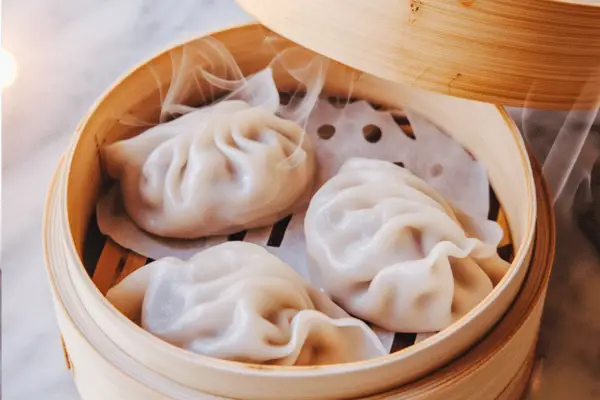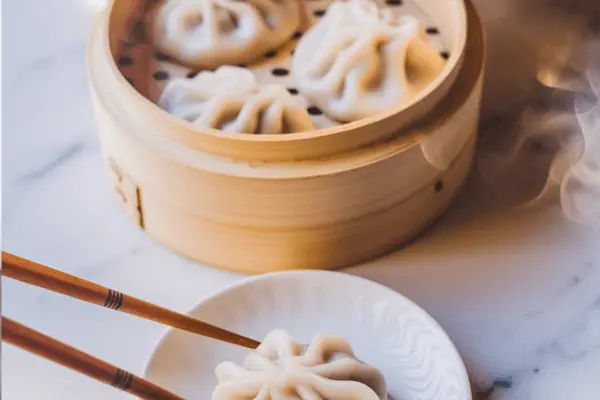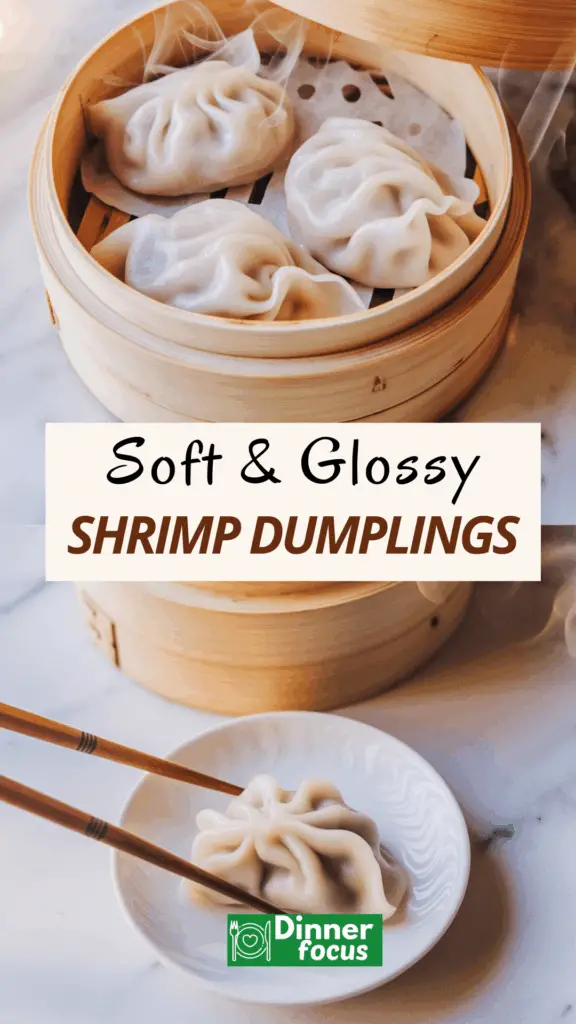There’s something magical about sitting at a busy dim sum place, watching the bamboo steamers arrive stacked high with these glossy, delicate shrimp dumplings. Honestly, every time I see the har gow cart come around, I perk up. It’s that dish everyone reaches for first.

I’ll be honest—I think they’re the gold standard of dim sum. If you’ve ever wanted to recreate that restaurant feel at home, I promise this recipe is going to get you pretty close.
The Long Road to Getting This Just Right
I’ll tell you upfront: it took me ages to crack this. I’m talking over two years of off-and-on testing. The filling? Easy. But those see-through, chewy-yet-tender wrappers haunted me.
I remember one weekend rolling out what felt like a hundred dumpling skins, only to have them crack or turn rubbery. My family would groan when they realized I was testing again. I don’t blame them—by round fifteen or so, I was sick of it myself.
But here’s the good news for you: you get to skip the headaches. I’ve done the trial and error, so you can just cook. It’s not hard once you know the tricks.
My Real-World Tips for Great Shrimp Dumplings
If you’re like me, you want the real talk, not the sugarcoated version. So here’s what I’ve learned from many messy counters:
- Boiling water for the dough is a must. Not just hot—really boiling. That’s how you get that translucent, stretchy wrapper that won’t tear when you pleat.
- Keep an eye on dough moisture. If you see cracking at the edges while rolling, it’s too dry. It’ll get tough after steaming. I just drizzle a touch more boiling water in small amounts and knead it back.
- Mind your shrimp size. I like using large shrimp and mashing them a bit before chopping for a plump, juicy filling. If you use small ones, you can keep them nearly whole.
- Lard vs. oil. I grew up with the taste of lard in dough, so I use it for flavor and texture. But oil works fine too if you want to keep it lighter.
- Cover the dough. Don’t let it dry out! Always keep it under a damp paper towel while you work.
- Steamer prep matters. I often use cheesecloth or parchment to line the basket. Sometimes, I’ll slice carrots into thin rounds and set each dumpling on its own carrot “seat.” It prevents sticking and looks charming.
- Eat them fresh. Trust me, these don’t reheat well. Make them when you’re ready to eat.

A Note About Adjusting Recipes
I’ll admit it here—there was a time when my measurements were way off. I tried to save my family from eating yet another test batch by halving things in my head. Bad idea. I ended up confusing my notes.
Since then, I always double-check and test the full batch exactly as written. If you’re scaling up or down, I suggest writing it out first. Kitchen math gets sneaky when you’re excited about dumplings.
Building the Filling
For the filling, it’s all about freshness and balance. Here’s how I do it:
I mix up the raw shrimp, oyster sauce, oil, white pepper, sesame oil, salt, sugar, and ginger. The trick is whipping it all in one direction for a couple of minutes. It helps the proteins bind so you get that cohesive, springy filling.
Finally, I add the chopped bamboo shoots for crunch and a bit of sweetness. Then I pop it in the fridge while I make the dough. Chilling the filling helps it hold its shape while you wrap.
Making That Tricky Dough
Here’s where many recipes fall apart.
I mix wheat starch with cornstarch (sometimes I use tapioca starch if I’m out). Then I slowly pour in the boiling water while stirring quickly. You want it to go from powder to translucent dough in seconds.
Once that happens, I add the lard or oil and keep stirring. While it’s still hot but safe to handle, I knead it for a couple of minutes until it’s smooth.
A digital kitchen scale helps a lot here. I portion the dough into equal balls, cover them with a damp towel, and test-roll one. If it’s cracking or sticky, I adjust with a little water or starch before proceeding.

Rolling, Filling, and Folding
This is the fun, slightly fiddly part.
I pre-boil water in my steamer while I work so it’s ready to go. Then I take a dough ball and roll it into a thin, roughly 3-inch circle.
I spoon in some filling and fold it carefully. Don’t stress too much about perfect pleats. I always tell people: make them neat enough to hold together and steam well, but don’t let Instagram photos scare you off. Homemade means they’ll look a bit rustic—and that’s part of the charm.
Cooking and Serving Your Homemade Dim Sum
Once the steamer water is at a rolling boil, I load up the basket, leaving space between the dumplings to expand. They steam for about 6 minutes over high heat.
As soon as they’re done, they’re glossy, slightly see-through, and smell incredible.
I serve them hot with chili oil or a classic dumpling dipping sauce. Around here, they disappear within minutes.
Shrimp dumplings

There’s something magical about biting into a translucent shrimp dumpling—delicate yet bursting with flavor.
Ingredients
For the Dough:
- 1 cup wheat starch
- ½ cup tapioca starch (or cornstarch)
- 1¼ cups boiling water (plus 1–2 teaspoons more in dry environments)
- 3 teaspoons lard or neutral oil
For the Filling:
- ½ pound shrimp, peeled, deveined, and patted dry
- 1 teaspoon sesame oil
- 1 tablespoon vegetable oil
- 1 teaspoon sugar
- ¼ teaspoon white pepper
- 1 teaspoon oyster sauce
- ¼ teaspoon salt
- ½ teaspoon fresh ginger, finely minced
- ¼ cup bamboo shoots, chopped finely
Instructions
- Prepare the Filling: Start by combining the shrimp with sesame oil, oyster sauce, ginger, vegetable oil, sugar, salt, and white pepper. Stir vigorously in one direction for a few minutes until the mixture turns sticky and cohesive. Fold in the chopped bamboo shoots. Cover the bowl and set it in the fridge while you move on to the dough.
- Make the Dough: In a mixing bowl, blend the wheat starch with tapioca starch. Carefully pour in the boiling water while stirring continuously. Add the lard or oil and keep mixing until it cools slightly. Knead the dough by hand for a couple of minutes until it becomes soft and pliable. Shape it into a log and cut into 18 equal portions. Keep them covered with a damp towel to prevent drying out.
- Shape and Steam: Bring water to a boil in your steamer. Roll each dough piece into a thin circle, about 3 inches across. Spoon a small amount of filling into the center and fold into a half-moon shape, pleating the edge as you go. Repeat until all dumplings are formed.
- Line your steamer with parchment or cabbage leaves, then place the dumplings about 1½ inches apart to give them room to expand. Steam over high heat for 6 minutes until translucent and cooked through. Serve immediately while still hot and tender.
Nutrition Information
Yield
6Serving Size
1Amount Per Serving Calories 249Total Fat 8gSaturated Fat 2gTrans Fat 0gUnsaturated Fat 6gCholesterol 82mgSodium 476mgCarbohydrates 31gFiber 1gSugar 1gProtein 11g
Dinnerfocus.com, occasionally offers nutritional information for recipes contained on this site. This information is provided as a courtesy and is an estimate only. This information comes from online calculators. Although allchickenrecipes.com attempts to provide accurate nutritional information, these figures are only estimates.
Final Thoughts from My Kitchen
If you’ve ever wanted to bring that dim sum experience home, these shrimp dumplings are worth the little bit of extra work.
And take it from someone who obsessed over the recipe for far too long: they’re easier than you think once you get the hang of it.
Try other shrimp recipes:
